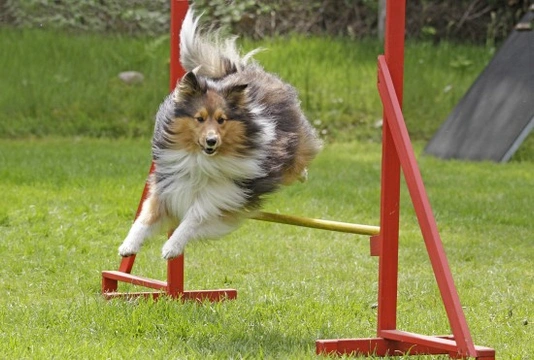
Frequently asked questions about dog agility
Dog agility is not only great fun and great exercise for the dogs and people that get involved in it, but it is also a highly visual sport that many people enjoy watching as well! Since the first dog agility competition at Crufts in the 1970’s, dog agility has come on in leaps and bounds- literally- and is becoming ever more popular within the UK year on year. Nowadays, virtually every area of the country is well served by dog agility clubs, organisations and competitions, and the good news is that your dog doesn’t have to be a pedigree breed or of any particular type in order to have a go!
If you are wondering if having a crack at dog agility might be fun and beneficial for you and your dog, read on for answers to may of the frequently asked questions from dog owners who are interested in finding out more.
Can your average pet dog do agility?
Literally any type of dog can have a go at canine agility, and benefit from the training and fitness that agility instils within dogs. How well suited any particular dog is to the rigours of agility will vary from case to case, but there is nothing stopping you and your dog from having a go! Herding dogs, retrieving dogs and medium build dogs that are highly energetic and intelligent are the types of dogs most commonly seen competing in agility classes, such as the Border Collie, Jack Russell, Labrador retriever and Springer Spaniel.
Are there any dogs that should not do agility or are not good at agility?
It is important to tailor your dog’s exercise regime to their specific needs, and agility should be seen as an extension of this. It is important not to push your dog too hard, and if your dog is elderly, very sedentary or very heavily built, they might find agility too much of a struggle to be worthwhile. However, you can always go at your own pace- agility training for fun and entertainment does not have to be competitive or high speed, and taking your dog slowly around a low course or trying out low impact obstacles at your dog’s own pace are generally fine for most canines.
At what age can dogs begin doing agility?
Agility work is an extension of your dog’s everyday training, and of course it is important to start training puppies from a young age. So in this respect, the groundwork for agility training can begin from as young as your dog is able to start to learn and follow training commands, and it is never too late to start! In terms of agility competitions, within the UK dogs must be aged 18 months or above in order to compete.
How long does it take to reach competition standard?
This is very much a “how long is a piece of string” question, and there is no one answer to it! How long it will take for your dog to be ready compete can vary from a few months to never! The experience of the trainer, the enthusiasm of the dog, how intelligent the dog is, how much you practice and how well you work together are all factors to bear in mind!
Do dogs actually like doing agility?
Generally the answer to this question is a resounding “yes” and in fact, actively enjoying agility is core to any dog’s success at the sport. Agility involves exercise, play, brain power and bonding, all things that dogs generally heartily enjoy! However, there are always exceptions, and dogs that are not very quick on the uptake or particularly energetic might heartily dislike agility. This is unlucky if you are enthusiastic about doing agility and really want to be able to take part with your dog, but if your dog really does not enjoy it, you should of course stop and find something else to do with them instead.
Do I need to do anything special regarding my dog’s care?
If your dog is active and involved in a lot of energetic agility work and training, you may have to adjust their diet to suit their nutritional requirements and the extra expenditure of energy that agility requires. You should of course also take extra special care of your dog’s health, and always be alert to any signs of strains, sprains, lameness or muscle soreness, and take pains to ensure that you never push your dog too hard. Tailor your agility work to match you dog’s fitness, building this up gradually until your dog is in peak condition.
How does canine agility benefit my dog?
There are a plethora of benefits to canine agility, for both dog and owner, and dogs that do agility are usually among the fittest, healthiest, best trained and happiest dogs around! Agility training can help to improve your dog’s fitness and suppleness, help to support a healthy immune system, teach your dog about socialising with other dogs, keep their brains active, and of course, dramatically improve their training and responsiveness. These are benefits that can apply to all dogs, so don’t be afraid to give agility a go!



